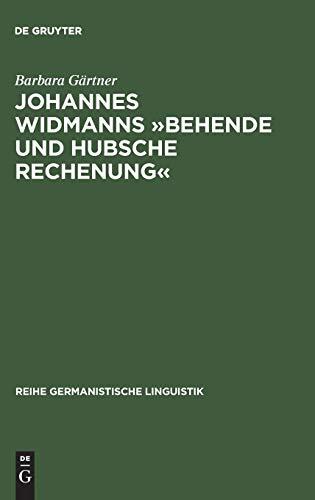
Johannes Widmanns »Behende und hubsche Rechenung«
작성자
Barbara Gärtner
아직 평점이 없습니다
History
형식
하드커버
페이지
662
언어
독일어
출판됨
Nov 29, 2000
출판사
Max Niemeyer Verlag
판
1
ISBN-10
348431222X
ISBN-13
9783484312227
설명
Barbara Gärtner's exploration delves into the intricate world of Johannes Widmann's significant work, "Behende und hubsche Rechenung". This scholarly examination contextualizes Widmann's contributions to both mathematics and linguistics within the framework of the German Renaissance. Gärtner meticulously analyzes the linguistic features of the text, providing insights into the interplay between language and numerical computation during this pivotal period.
The examination goes beyond mere historical analysis, delving into the pedagogical implications of Widmann's work for contemporary educators and scholars. Gärtner emphasizes the enduring relevance of historical texts in informing modern educational practices in mathematics. Her rigorous approach is complemented by comprehensive indices and bibliographies, making the work accessible and informative for researchers and students alike.
Moreover, Gärtner's attention to detail invites readers to appreciate the stylistic and rhetorical elements of Widmann's writing. The text serves as a bridge, connecting past and present linguistic practices, demonstrating how the evolution of language can illuminate the development of mathematical thought.
Throughout her discourse, Gärtner highlights the importance of interdisciplinary study, encouraging readers to consider the cultural and intellectual currents of the time that shaped Widmann's work. This investigation not only preserves the legacy of an influential figure but also enriches our understanding of the relationship between language and logic in historical contexts.
The examination goes beyond mere historical analysis, delving into the pedagogical implications of Widmann's work for contemporary educators and scholars. Gärtner emphasizes the enduring relevance of historical texts in informing modern educational practices in mathematics. Her rigorous approach is complemented by comprehensive indices and bibliographies, making the work accessible and informative for researchers and students alike.
Moreover, Gärtner's attention to detail invites readers to appreciate the stylistic and rhetorical elements of Widmann's writing. The text serves as a bridge, connecting past and present linguistic practices, demonstrating how the evolution of language can illuminate the development of mathematical thought.
Throughout her discourse, Gärtner highlights the importance of interdisciplinary study, encouraging readers to consider the cultural and intellectual currents of the time that shaped Widmann's work. This investigation not only preserves the legacy of an influential figure but also enriches our understanding of the relationship between language and logic in historical contexts.